Why More Flutes Aren't Always Better: Understanding the Differences Between 3, 4, and 5-Flute Endmills
Published by Kortney on Jun 8th 2023
Have you ever been tasked with selecting the right endmill for a machining project, only to be overwhelmed by the sheer number of options available? The truth is, not all endmills are created equal, and choosing the wrong one can lead to subpar results and wasted time. In this article, we’ll explore the differences between 3, 4, and 5-flute endmills, and help you understand the advantages and disadvantages of each. Whether you’re a seasoned professional or just starting out, this article will provide valuable insights to help you make informed decisions for your next machining project.
What Are Endmills and How Do They Work?
Before we dive into the differences between 3, 4, and 5-flute endmills, let's first define what an endmill is and how it works. An endmill is a type of milling cutter, specifically designed for machining operations such as contouring, profiling, and slotting. It is a rotary cutting tool with one or more cutting edges, which can be used to remove material from a workpiece.
Endmills come in a variety of shapes and sizes, each with its own unique purpose. They can be made from different materials, such as high-speed steel, carbide, or cobalt, each with its own set of advantages and disadvantages.
When it comes to selecting the right endmill for your project, it's important to consider factors such as the material you're cutting, the hardness of the material, and the type of operation you're performing. Factors such as flute count and helix angle can also play a significant role in the performance of the endmill and the quality of the finished product.
Now that we have a better understanding of what an endmill is and how it works, let's take a closer look at the advantages and disadvantages of 3-flute endmills.
What Are the Advantages and Disadvantages of 3-Flute Endmills?
3-flute endmills are a popular option for machining materials such as aluminum and plastics. One of the main advantages of these endmills is that they can typically remove material at a faster rate than their 4- and 5-flute counterparts. This is due to the fact that there is more space between the flutes, allowing for more chips to be cleared with each rotation of the endmill.
In addition, 3-flute endmills may produce a smoother finish on some materials, as there are fewer flutes in contact with the material at any given time. This can lead to less chatter and vibration during the machining process, resulting in a higher-quality surface finish.
However, one disadvantage of 3-flute endmills is that they may not be as rigid as endmills with more flutes. This can lead to deflection or bending during heavy cuts, which can result in a poor finish or even breakage of the endmill.
Overall, the decision to use a 3-flute endmill will depend on the specific material being machined and the desired outcome. As with any endmill, it's important to choose the right tool for the job in order to achieve the best possible results.
Now, let's take a look at the advantages and disadvantages of 4-flute endmills.
What Are the Advantages and Disadvantages of 4-Flute Endmills?
Now that we've explored the benefits and drawbacks of 3-flute endmills, it's time to delve into 4-flute endmills. One of the main advantages of 4-flute endmills is their ability to handle harder materials, such as stainless steel and titanium. With four cutting edges, these endmills are able to distribute the cutting load more evenly, resulting in less stress on each individual edge. This also means that 4-flute endmills can be run at higher speeds and feeds, increasing productivity and reducing overall machining time.
However, 4-flute endmills also have their disadvantages. For one, they may produce a rougher surface finish compared to their 3-flute counterparts. This is because the extra cutting edge can cause more vibration, leading to a less smooth surface. Additionally, 4-flute endmills have a narrower chip space, which can lead to chip packing and clogging.
Overall, choosing between a 3-flute and 4-flute endmill ultimately depends on the specific job at hand. While 4-flute endmills may have their drawbacks, they can be a valuable tool in machining harder materials and increasing productivity. Now let's explore the benefits and drawbacks of 5-flute endmills.
What Are the Advantages and Disadvantages of 5-Flute Endmills?
When it comes to 5-flute endmills, there are both advantages and disadvantages to consider. One significant benefit is that they can produce a smoother surface finish due to the reduced vibration caused by the extra cutting edges. Additionally, 5-flute endmills have a wider chip space and can evacuate chips more efficiently, reducing the likelihood of chip packing and clogging.
However, the main drawback of 5-flute endmills is their decreased chip load capacity. This means that they cannot take as big a bite as 3 or 4-flute endmills, which may result in slower feed rates and lower productivity. Additionally, 5-flute endmills may not be as effective when machining harder materials.
Ultimately, the decision between a 3, 4, or 5-flute endmill depends on the specific job requirements. Understanding the advantages and disadvantages of each type can help you make an informed decision and ultimately achieve the best results for your machining needs. In the following section, we will take a closer look at why more flutes are not always better and how to choose the right endmill for your job.
Why More Flutes Aren't Always Better
While it may be tempting to assume that more flutes will always result in a better outcome, this is not necessarily true when it comes to endmills. As we have previously discussed, each type of endmill has its own set of advantages and disadvantages. While increasing the number of flutes can increase the surface finish and decrease vibration, it can also result in decreased chip load capacity and reduced performance on harder materials.
It is important to remember that the number of flutes is just one factor to consider when selecting an endmill. Other factors, such as the material being machined, the desired surface finish, and the required feed rates, must also be taken into account. Choosing the right endmill for your project requires a careful consideration of all of these factors.
In the next section, we will explore the specific steps you can take to select the right endmill for your job. By understanding the unique requirements of your machining project and considering all of the available options, you can choose the best endmill for the job and achieve the best possible results.
How to Choose the Right Endmill for Your Project
To choose the right endmill for your project, you need to consider a few key factors. Firstly, you need to assess the material you will be machining. Different materials require different types of endmills, so it is crucial to choose an endmill that is suited to the material you are working with. For example, if you are machining aluminum, you may want to opt for a 3-flute endmill, while a 5-flute endmill may be better suited to machining steel.
In addition to considering the material, you need to think about the desired surface finish of your project. If you want a smooth finish, a 4 or 5-flute endmill may be preferable, while a 3-flute endmill may be better suited for rougher finishes.
Another key factor to consider is the required feed rates for your project. It is essential to choose an endmill that can handle the necessary feed rates to achieve the desired results. A general rule of thumb is that the more flutes an endmill has, the slower the feed rate should be.
Finally, you must consider the unique requirements of your machining project. Every job is different, so it is vital to take the time to carefully assess your project's needs. By considering all of these factors and evaluating all available options, you can choose the best endmill for the job and achieve the best possible results.
Selecting the right endmill for your project requires a thoughtful consideration of several factors. By taking the time to assess the material being machined, the desired surface finish, and the required feed rates, you can make an informed decision on which endmill to use. Remember that the number of flutes is just one of the factors to consider when selecting an endmill, and by evaluating all available options, you can achieve outstanding results in your machining project.
Choosing the right endmill for your machining project is crucial for achieving optimal results. Although more flutes may seem like the better option, understanding the unique advantages and disadvantages of 3, 4, and 5-flute endmills is key. Always consider the material, speeds and feeds, and finish you are aiming for when making your decision. As you move forward with your next project, remember that selecting the right endmill is the key to success. So, take your time, do your research, and choose wisely.
Superior Machine & Tool features an extensive catalog of carbide endmills. View and shop our selection of 3 flute carbide endmills, 4 flute carbide endmills or 5 flute carbide endmills. You can also shop our entire catalog of endmills featuring over 4,000 products that currently available with more being added daily. Products are shipped same day if orders are placed prior to 4:00 pm EST.

